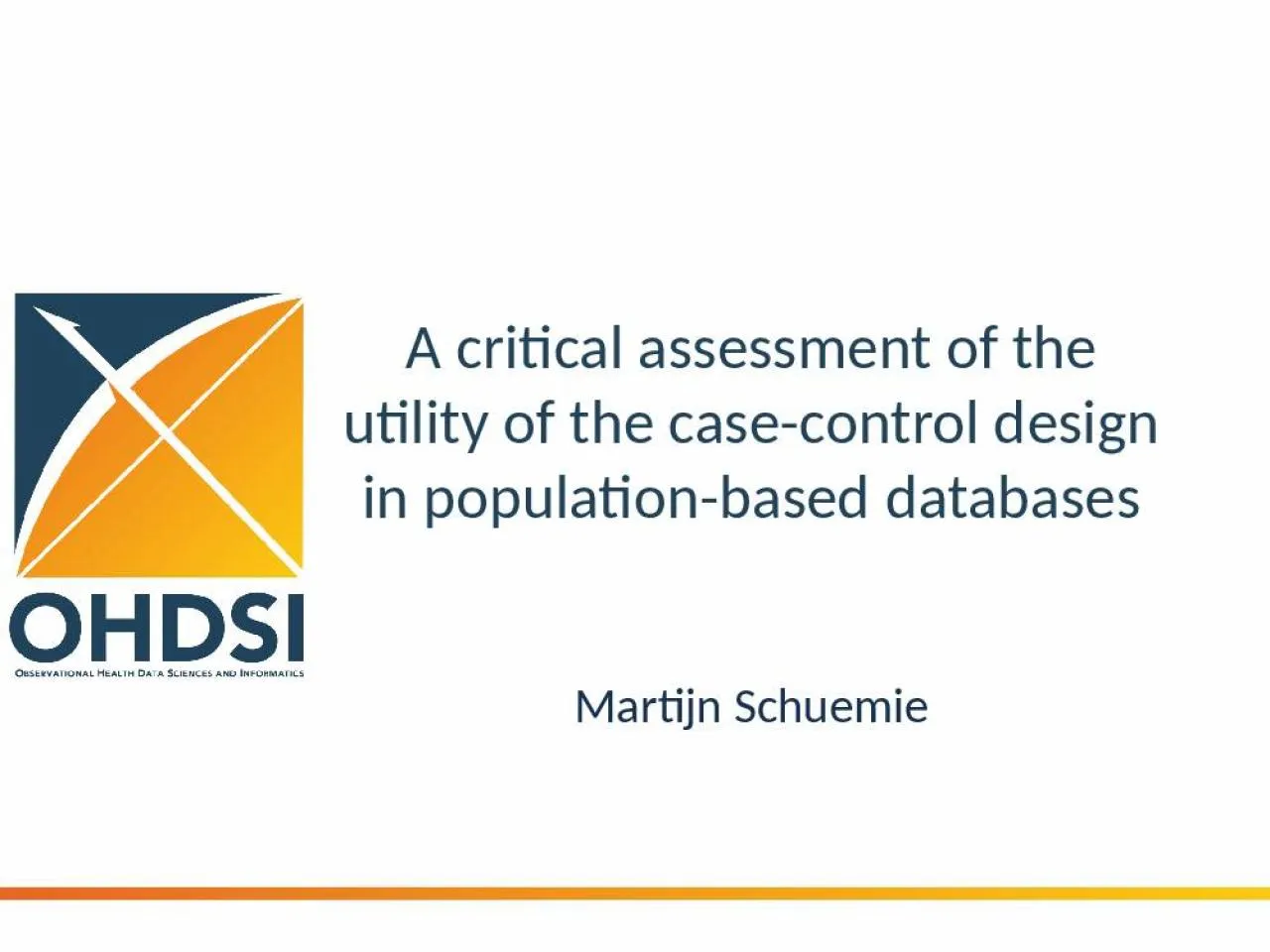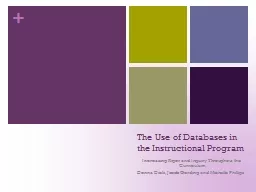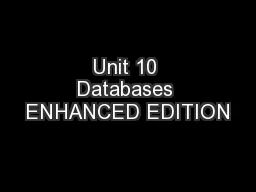PPT-A critical assessment of the utility of the case-control design in population-based databases
Author : ava | Published Date : 2022-05-18
Martijn Schuemie History Originated in a time when data was not readily available Mayor success Doll amp Hills study showing the link between smoking and lung cancer
Presentation Embed Code
Download Presentation
Download Presentation The PPT/PDF document "A critical assessment of the utility of ..." is the property of its rightful owner. Permission is granted to download and print the materials on this website for personal, non-commercial use only, and to display it on your personal computer provided you do not modify the materials and that you retain all copyright notices contained in the materials. By downloading content from our website, you accept the terms of this agreement.
A critical assessment of the utility of the case-control design in population-based databases: Transcript
Martijn Schuemie History Originated in a time when data was not readily available Mayor success Doll amp Hills study showing the link between smoking and lung cancer Nowadays extensively used in retrospective populationbased databases eg CPRD. Seminar: Transaction Processing (Bachelor). SS 2009. Dennis . Stratmann. Outline. Goal and Overview. Examine Three Approaches to CC on RD:. 1. Predicate-Oriented Concurrency Control. 2. Relational Update Transactions. Increasing Rigor and Inquiry Throughout the Curriculum. Donna Dick, Jacob . Gerding. , and Michelle Phillips. In-Service Objective. Participants will utilize the SIRS database in order to find and evaluate resources related to their curriculum.. What are databases?. Databases are a collection tables that are searchable. These databases are filled with periodical materials (newspapers, journals, magazines, and even blog posts). These databases prevent you from having to go from journal to journal by hand. Unit Contents. Section A: Database Basics. Section B: Database Tools. Section C: Database Design. Section D: SQL. Section E: Big Data. Unit 10: Databases. 2. Section A: Database Basics . Operational and Analytical Databases. Michael J. Neely. University of Southern California. http://www-rcf.usc.edu/~mjneely. IEEE INFOCOM, San Diego, March 2010. *Sponsored in part by the DARPA IT-MANET Program,. NSF . Career CCF-. 0747525. Gail Lee. Utility and Railroad . Engineer, INDOT. June 10, 2015. Learning Objectives. Become familiar with . IDM Chapter 104 . –. Our source document for utility coordination. definitions, codes. Roles & Responsibilities. An . entity. is anything about which the organization wishes to store data. At your college or university, one entity would be the student.. STUDENTS. Student ID. Last Name. First Name. Phone Number. Distinguish between the physical and logical views of . data.. Describe how data is organized: characters, fields, records, tables, and . databases.. Define key fields and how they are used to integrate data in a database.. Jennifer McCleve. Utilities & Rail Branch Manager. Road construction relies on execution of all work prior to ensure their success.. How do we do our part with constraints of budget, time, and resources? . Todd May. District Deputy Commissioner. Greenfield District . – . INDOT. INDOT Mission: . INDOT will plan, build, maintain and operate a superior transportation system enhancing safety, mobility and economic growth. Daniel Fasko, Jr., Ph.D.. Definition of Critical Thinking. Critical Thinking Skills. Critical Thinking Dispositions. Instructional Strategies. Assessment Techniques. Review of Samples of Syllabi. Overview. ~Max Frisch. (Swiss playwright, novelist, philosopher, social critic). Contents. Citing Databases. General Info. MLA. APA. Visuals—Internal Citations. MLA. APA. Visuals—Bibliographic Citations. MLA. La gamme de thé MORPHEE vise toute générations recherchant le sommeil paisible tant désiré et non procuré par tout types de médicaments. Essentiellement composé de feuille de morphine, ce thé vous assurera d’un rétablissement digne d’un voyage sur . Adeetya's Kitchen & Furniture in Pune offers exquisite handmade furniture designs with superior craftsmanship and modern, stylish appeal. https://adeetyas.com/factory-made-furniture-design-in-pune.php
Download Document
Here is the link to download the presentation.
"A critical assessment of the utility of the case-control design in population-based databases"The content belongs to its owner. You may download and print it for personal use, without modification, and keep all copyright notices. By downloading, you agree to these terms.
Related Documents














